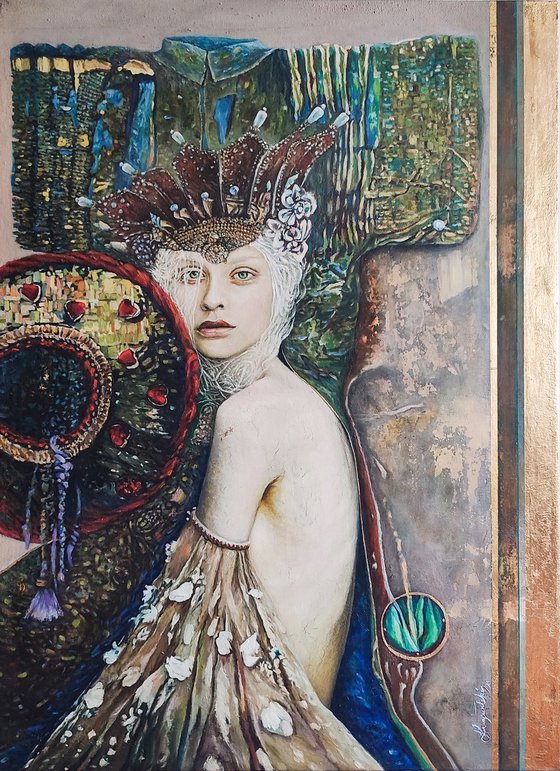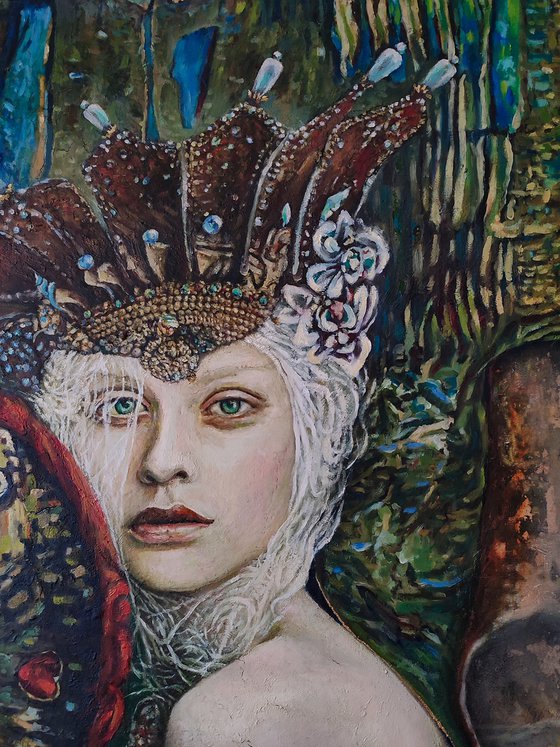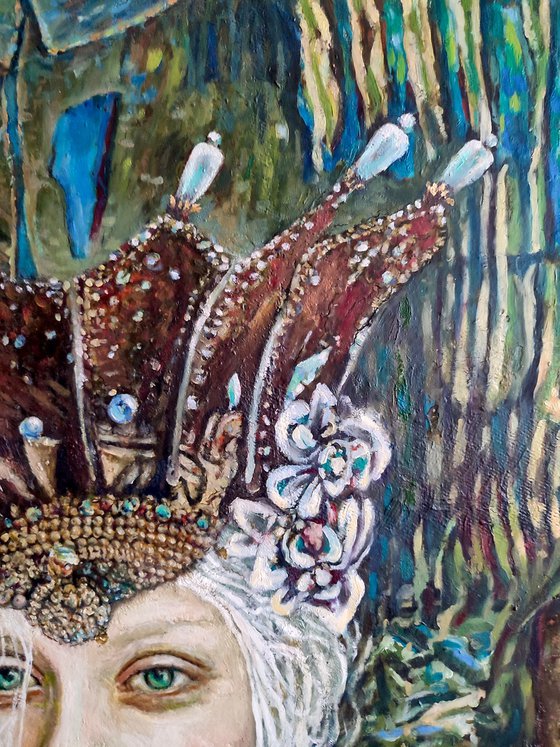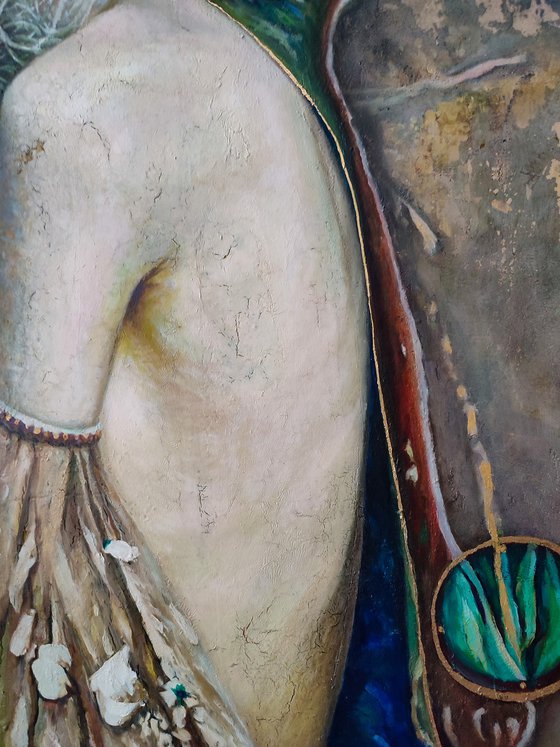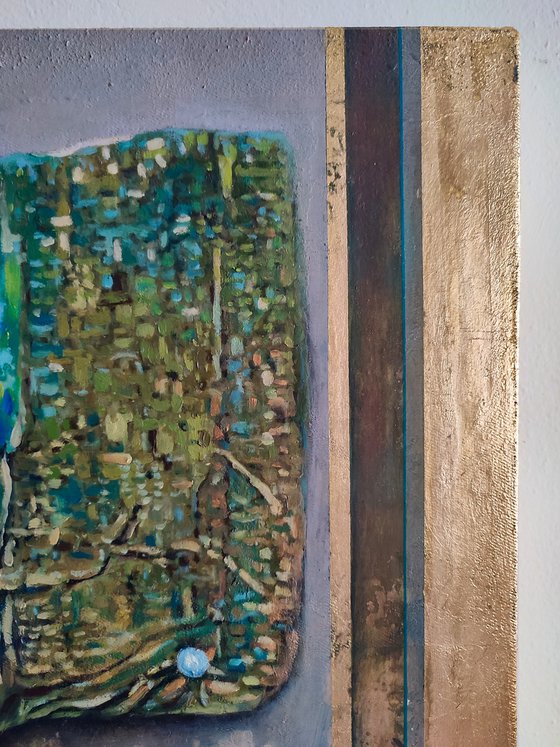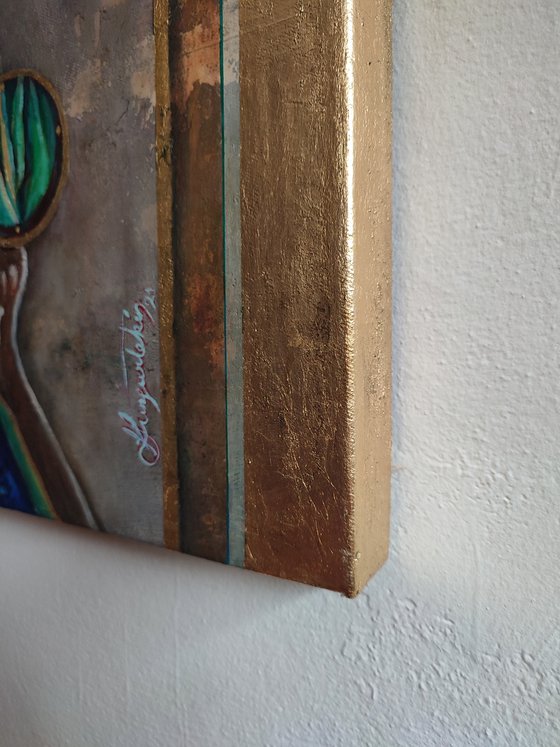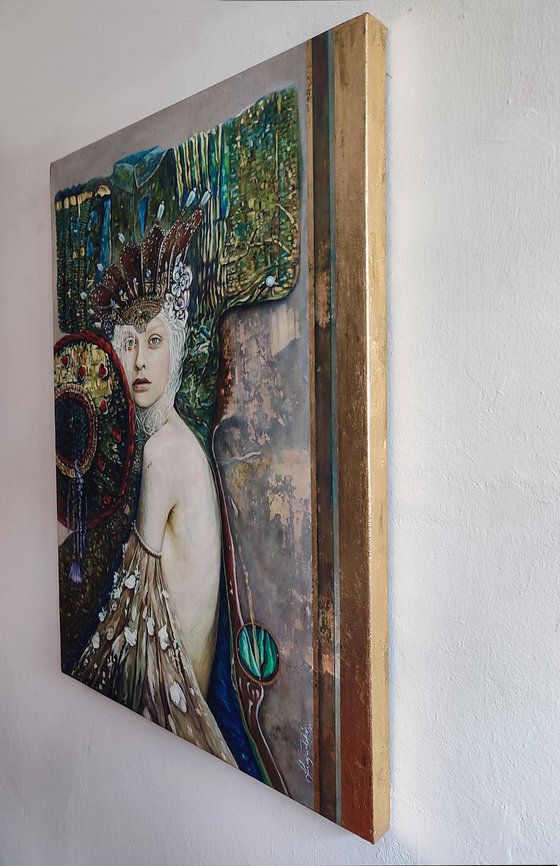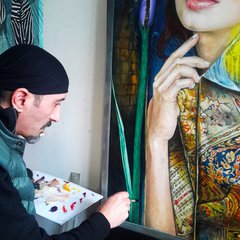Main Navigation
Original artwork description:
In Carnival, the artist delves into the concept of masks as a means of hiding oneself. This journey leads him to explore the history of Venice's Carnival, particularly its origins in the 1268 plague epidemic. The use of masks during this time not only concealed the bodies of the afflicted but also removed class distinctions. Despite being banned during the Napoleonic era, Carnivals continue today. The artist draws parallels between the Venetian masks and the colorful costumes of class separation seen in Japanese kimonos, which, initially worn by samurai, became widely used by various social classes during the Edo period.
In this painting, the artist reimagines the costumes and masks worn at the Venice Carnival. The female figure is adorned in a dress made of both organic and inorganic elements and textures. Behind the figure, a torn and antique kimono evokes the passage of time, symbolizing the juxtaposition between old and new. The transparent glass at the bottom right references the movement of time, resembling an hourglass. The artist’s approach to memory is reflected in his intervention, where he deletes unclear images and fragments others, leaving a visual representation of the passage of time and forgotten memories. The wooden frame around the composition represents the artist’s connection to his past, encapsulating his impressions and emotions.
Carnival reflects the complex relationship between identity, memory, and class distinctions. By reinterpreting historical costumes and masks, the artist highlights the fleeting nature of time and the role of memory in shaping personal and collective identity.
Perfect For
Collectors Of Historical And Conceptual Art
Cultural History Enthusiasts – Ideal for those fascinated by the evolution of cultural practices and societal norms.
Art Exhibitions Focusing On Memory And Time – A perfect piece for exhibitions that explore the themes of time, memory, and transformation.
Materials used:
gold paper and oil
Tags:
#cultural memory #organic inorganicCarnival (2021) Mixed-media painting
by Fatih Sungurtekin
1 Artist Reviews
£7,610.87
- Mixed-media painting on Canvas
- One of a kind artwork
- Size: 80 x 110 x 5cm (unframed)
- Ready to hang
- Signed on the front
- Style: Photorealistic
- Subject: People and portraits
Loading
Original artwork description
In Carnival, the artist delves into the concept of masks as a means of hiding oneself. This journey leads him to explore the history of Venice's Carnival, particularly its origins in the 1268 plague epidemic. The use of masks during this time not only concealed the bodies of the afflicted but also removed class distinctions. Despite being banned during the Napoleonic era, Carnivals continue today. The artist draws parallels between the Venetian masks and the colorful costumes of class separation seen in Japanese kimonos, which, initially worn by samurai, became widely used by various social classes during the Edo period.
In this painting, the artist reimagines the costumes and masks worn at the Venice Carnival. The female figure is adorned in a dress made of both organic and inorganic elements and textures. Behind the figure, a torn and antique kimono evokes the passage of time, symbolizing the juxtaposition between old and new. The transparent glass at the bottom right references the movement of time, resembling an hourglass. The artist’s approach to memory is reflected in his intervention, where he deletes unclear images and fragments others, leaving a visual representation of the passage of time and forgotten memories. The wooden frame around the composition represents the artist’s connection to his past, encapsulating his impressions and emotions.
Carnival reflects the complex relationship between identity, memory, and class distinctions. By reinterpreting historical costumes and masks, the artist highlights the fleeting nature of time and the role of memory in shaping personal and collective identity.
Perfect For
Collectors Of Historical And Conceptual Art
Cultural History Enthusiasts – Ideal for those fascinated by the evolution of cultural practices and societal norms.
Art Exhibitions Focusing On Memory And Time – A perfect piece for exhibitions that explore the themes of time, memory, and transformation.
Materials used:
gold paper and oil
Tags:
#cultural memory #organic inorganic14 day money back guaranteeLearn more
